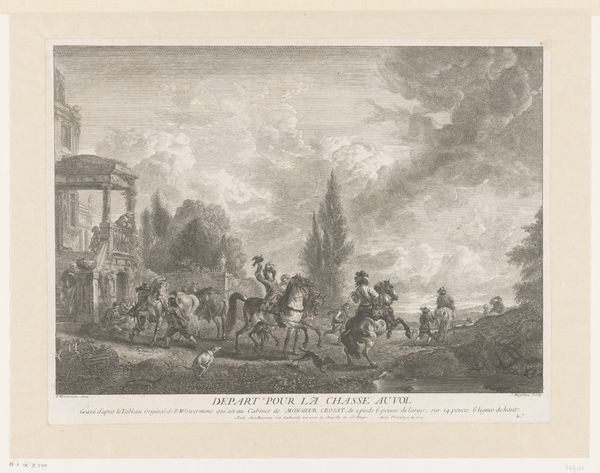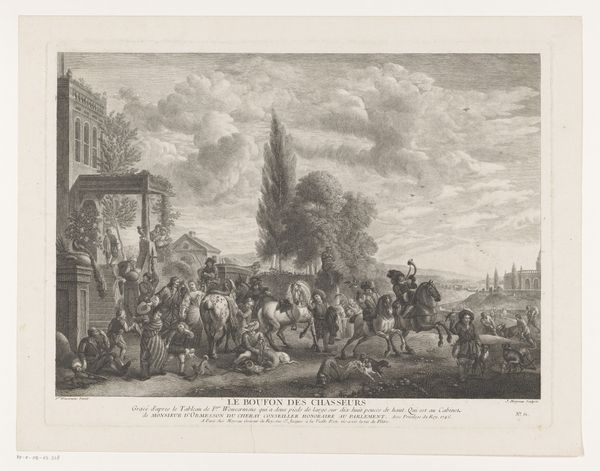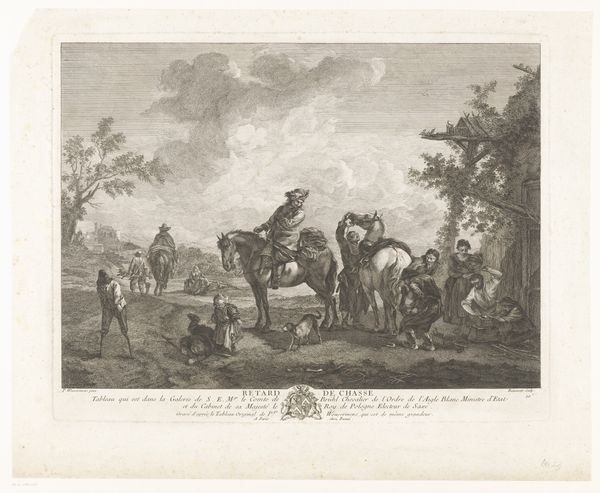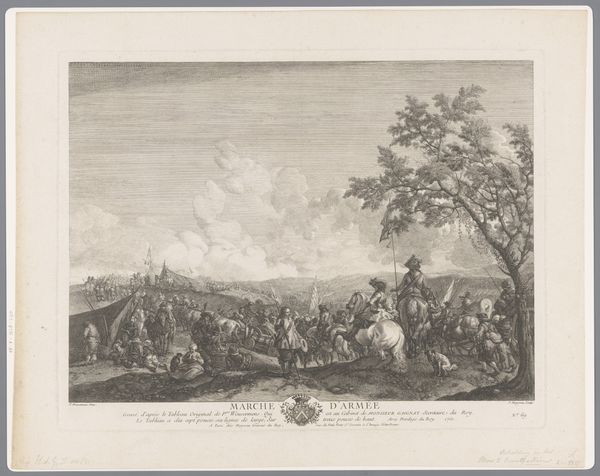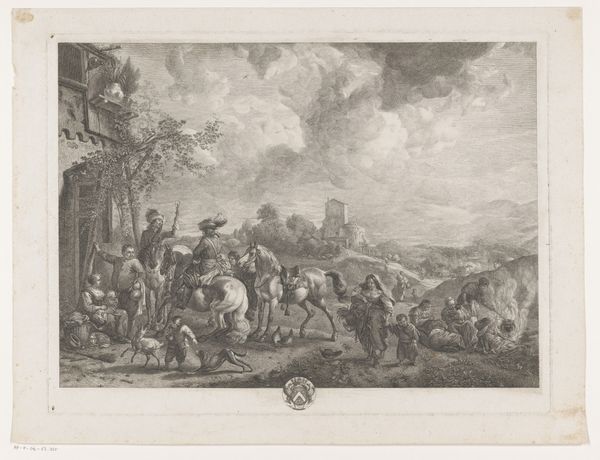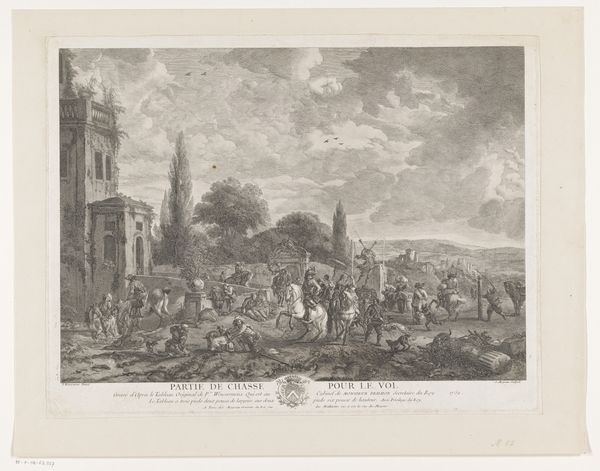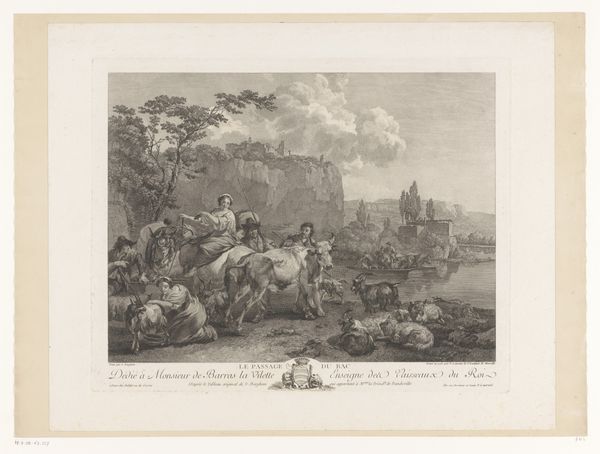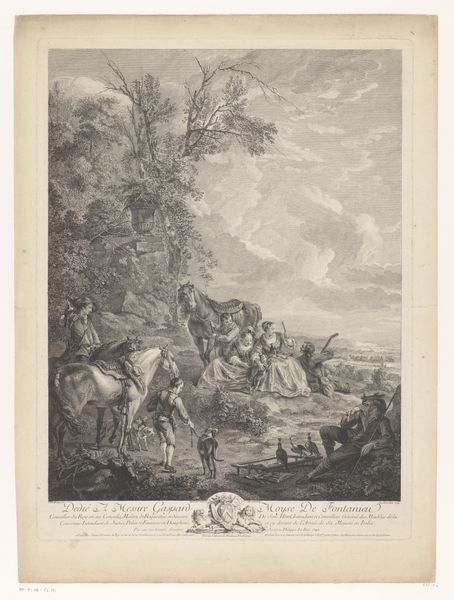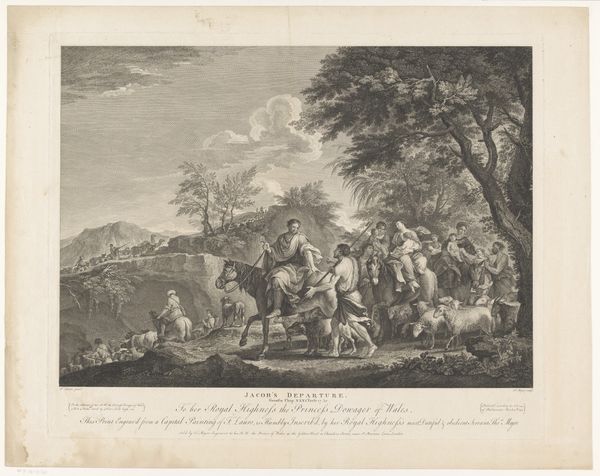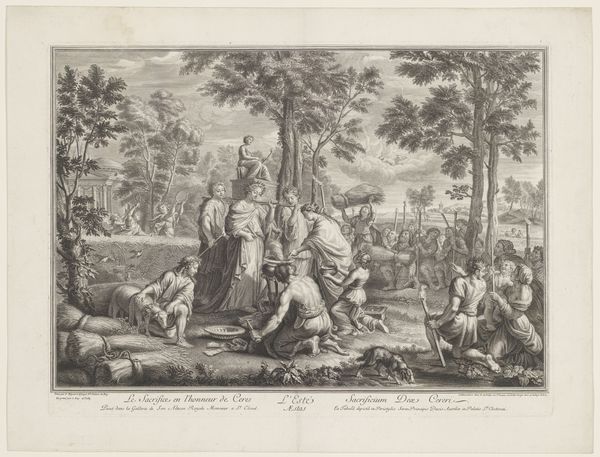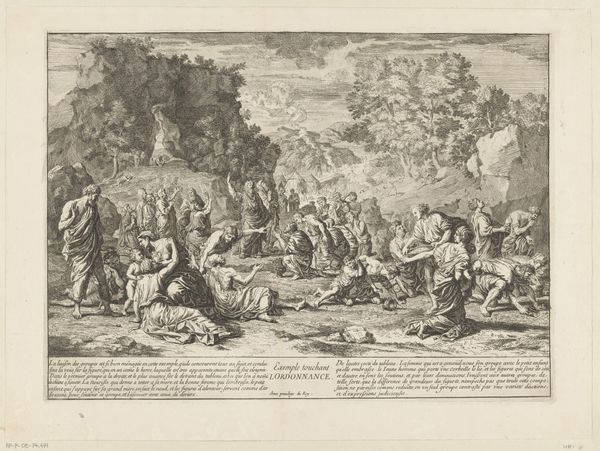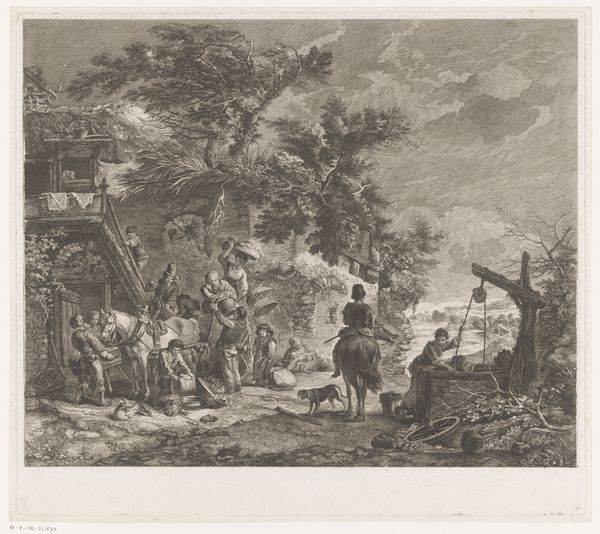
print, engraving
#
baroque
# print
#
landscape
#
figuration
#
cityscape
#
genre-painting
#
engraving
Dimensions: height 367 mm, width 479 mm
Copyright: Rijks Museum: Open Domain
Curator: Looking at this print, "Ruiters bij een hoefsmid," or "Horsemen at a Farrier," by Jean Moyreau, created in 1746, now residing in the Rijksmuseum, my immediate impression is of organized chaos. The scene teems with life, almost like a stage set, every figure engaged in their task. Editor: The distribution of dark and light areas really commands the eye. The detail is stunning, and you see this bustling street scene offset by that expanse of sky in the background... I find it so absorbing. Curator: I find this scene to reflect how integral the horse was to eighteenth-century life. Look how much the community and economy were wrapped around it: not just transport but also status is articulated through the horses here. Editor: You’re right; there's that interplay between work and privilege that Moyreau captures perfectly with the careful arrangement of shapes. The architecture to the right frames and balances the scene. Did you notice the figures observing from the window above? Curator: The figures in the window indeed offer a voyeuristic perspective, overseeing this common, everyday activity, the repairing of horseshoes, which, back then, was critical. Notice, too, how, with each element, whether animal or building, Moyreau connects to tradition. The farrier was crucial, so one way to read this is as a memorialisation of important tradespeople of the day. Editor: The lines created by the engraver certainly bring dynamism to this crowded composition. Look how light and shadow shape the cloudscape at the upper left to lend it almost a mythical aspect. Curator: Absolutely, there is definitely an element of dramatism, despite the fact this is about mundane tasks and trades! The dogs playing, even the resting ducks – those were included not just to fill visual gaps but as moral counterpoints or signs of earthly needs. Even this simple, everyday subject can express deeper needs in human existence. Editor: This print really shows how much can be done within a monochrome framework. The visual storytelling on display truly captivates me. I am finding more detail upon each viewing. Curator: Agreed; revisiting it has enhanced my understanding of its purpose – of depicting an ordinary place but revealing profound implications of history and memory.
Comments
No comments
Be the first to comment and join the conversation on the ultimate creative platform.
